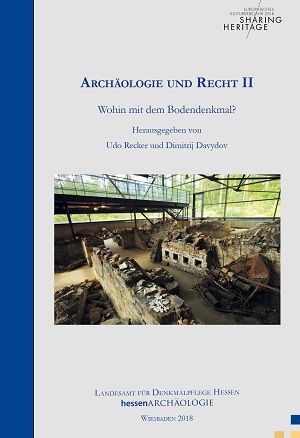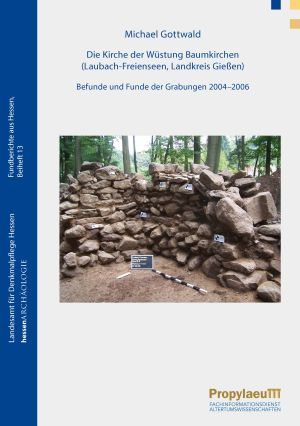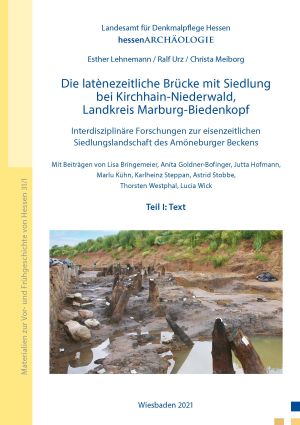Recker, Udo
Archäologie und Recht II.: Wohin mit dem Bodendenkmal?
The anthology focuses on current issues where archaeology and jurisdiction intersect, particularly in dealing with archaeological heritage (e.g. scope and limits of private research, financing of archaeological rescue excavations, the circulation of archaeological finds, forms of administrative action in the preservation of archaeological monuments).
In addition to essays concentrating on the legal situation in Germany, several essays deal with the legal situation in other European countries. The aim is to enable readers to identify similarities and differences in the resolution of typical conflicts of interest in the field of archaeological heritage conservation in Europe.
Die Kirche der Wüstung Baumkirchen (Laubach-Freienseen, Landkreis Gießen): Befunde und Funde der Grabungen 2004–2006
In the course of a research project on processes concerning the emergence and abandonment of medieval settlements in the Vorderer Vogelsberg, excavations were carried out from 2004 to 2006 on the church remains of the village of Baumkirchen near Laubach-Freienseen (district of Gießen) in Hesse, which has been deserted in the Late Middle Ages. This study deals with finds and features from the single-nave stone church and the surrounding area. According to the associated finds, the walls of the churchyard encompassed also secular buildings. Village and church were probably abandoned in the same period.
Die prähistorischen Auensiedlungen des Lahntals um die Gemeinde Weimar, Landkreis Marburg-Biedenkopf (Hessen): Archäobotanische und geoarchäologische Forschungen zum Wandel von Landwirtschaft und Umwelt zwischen Frühneolithikum und Mittelalter
30 years of excavations by the Hessian State Archaeology Department uncovered a considerable amount of pre- and early historic settlements in Marburg's Lahn Valley. This has fundamentally changed the former image of an inaccessible floodplain unsuitable for permanent settlement. This study provides a geoarchaeological perspective on our understanding of local settlement processes as well as archaeobotanical insights into developments in agriculture and of the environment between the Early Neolithic and the Middle Ages. The case study shows that the floodplains of low mountain rivers were no purely natural landscapes, but conceal cultural landscapes reaching far back into prehistoric times and therefore worthy of protection.
Die latènezeitliche Brücke mit Siedlung bei Kirchhain-Niederwald, Landkreis Marburg-Biedenkopf: Interdisziplinäre Forschungen zur eisenzeitlichen Siedlungslandschaft des Amöneburger Beckens
Between 2008 and 2012 hessenARCHÄOLOGIE uncovered a spectacular site of the later Iron Age in the northern Amöneburg Basin near Niederwald – the remains of a 21-metre-long wooden yoke-pile bridge that had served as a river crossing from around the middle of the 3rd to the middle of the 2nd century BC. It proved to be a stroke of luck that in 2011 400 m west of the bridge the remains of a contemporary settlement came to light, whose earliest traces date back to the Hallstatt period. The result of the in-depth interdisciplinary research, funded by the German Research Foundation (DFG), is a meticulous two-volume study that doesn’t just look at the local Iron Age remains, but draws a picture of the Amöneburg Basin during the 1st millennium BC in terms of landscape and settlement history.
Volume 2, s. hier.










